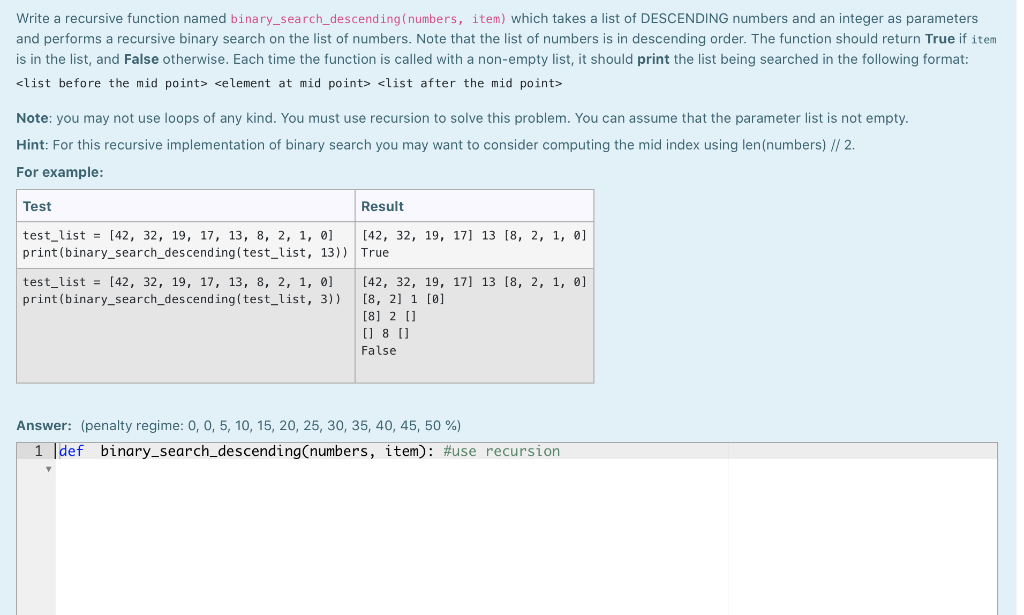Answered step by step
Verified Expert Solution
Question
1 Approved Answer
I need help with these questions I don't get how I am meant to use recursion for these in python no loops Q1: Q2: A
I need help with these questions I don't get how I am meant to use recursion for these in python no loops
Q1:

Q2:

- Note: you may not use loops of any kind. You must use recursion to solve this problem. You can assume that the parameter list is not empty. Hint: For this recursive implementation of binary search you may want to consider computing the mid index using len(numbers) // 2. For example: Test Result [42, 32, 19, 17] 13 [8, 2, 1, 0] True test_list = [42, 32, 19, 17, 13, 8, 2, 1, 0] print (binary_search_descending(test_list, 13)) test_list = [42, 32, 19, 17, 13, 8, 2, 1, 0] print(binary_search_descending(test_list, 3)) [42, 32, 19, 17] 13 [8, 2, 1, 0] [8, 2] i [0] [8] 2 [] [] 80 False Answer: (penalty regime: 0, 0, 5, 10, 15, 20, 25, 30, 35, 40, 45, 50 %) 1 def binary_search_descending numbers, item): #use recursion
Step by Step Solution
There are 3 Steps involved in it
Step: 1

Get Instant Access to Expert-Tailored Solutions
See step-by-step solutions with expert insights and AI powered tools for academic success
Step: 2

Step: 3

Ace Your Homework with AI
Get the answers you need in no time with our AI-driven, step-by-step assistance
Get Started


